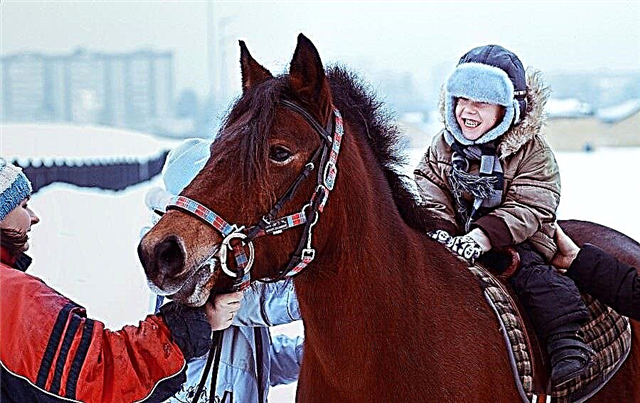Allergic diseases are a widespread pathology of childhood. To date, great strides have been made in the treatment of various allergic diseases, but the number of children, especially young children, with skin manifestations of allergies is growing rapidly. Allergic dermatitis is a fairly common skin disorder in young children. It affects about 20% of children from all over the world. Cream, ointment for skin allergies for children is now widely sold in pharmacies.
Allergic (atopic) dermatitis - what is it?
It is an allergic skin inflammation that occurs when exposed to numerous factors and manifests itself as itching, irritation and rashes on different parts of the skin. Allergic dermatitis in many cases occurs in children whose parents are allergic.
In case of untimely and incorrect treatment, there is a danger of transition to the chronic stage, and the risk of developing allergic rhinitis and bronchial asthma increases.
In children, the skin manifestations of allergies vary and depend on age, the form of atopic dermatitis and the severity of the disease. These differences determine which allergy ointments and creams for children will be used in treatment.
Forms of atopic dermatitis
- Infant form. The first skin rashes often appear in the first 2 - 3 months of life in the form of exudative diathesis. First appearing on the face, the rash quickly spreads to the arms, legs and buttocks. In places of lesion on the skin, redness, swelling, macular-bubble rash, weeping, and then crusts occur. All these are manifestations of acute inflammation. When the inflammation subsides, the patchy rash becomes dry and flakes appear. The infant form appears before the age of three.
- Children's uniform. These are children in the age period from 3 to 12 years old. It affects mainly the skin folds of the elbow, popliteal, behind the ears, inguinal, as well as the outer side of the hands and fingers, neck, ankles. Characterized by redness, swelling of the skin, thickening and strengthening of the pattern on the skin. The skin has a gray dull shade and scaly scaling.
- Teenage form. It manifests itself in children from the age of thirteen with a pronounced thickening. The skin is dry with flaking, the face and upper body are most affected. Characterized by a continuous flow with periods of exacerbations.
By the nature of the skin rash, they are divided:
- acute phase (skin redness, spots, blisters, erosion and peeling);
- chronic phase (thickening of the skin, scaly patches with scratching on the skin).
According to the severity of the disease, they are distinguished: mild, moderate and severe.
Stages of development of atopic dermatitis
- Initial stage.It can develop in children prone to allergies, and is manifested by milk crust (limited redness of the skin with yellowish crusts), redness on the cheeks and swelling, slight peeling.
- Stage of pronounced skin changes. Skin changes depend on the phase of allergic dermatitis.
- Remission stage.Disappearance of all skin manifestations. This stage can last from several days, months and many years, or it may not come at all.
- Clinical recovery.Absence of manifestations of the disease for 3 years or more.
Causes and factors of the formation of atopic dermatitis
- Food allergens are foods with increased allergic activity. These are cow's milk, chicken eggs, fish, seafood, cereals, citrus fruits, chocolate. Intolerance to cow's milk in newborns and children under one year old occurs in 70 - 90% of cases.
- Aeroallergens (contained in the air) of living quarters - house dust mites, fungi (molds, yeasts), wool and excreta of animals and insects.
- Chemical factors - various detergents, cosmetics, creams, dusting powders.
- Physical factors - trauma to the skin during combing, sweating and wearing synthetic fabric.
- Psychosocial factors - tense school environment, family difficulties, stress.
- Environmentally unfavorable factors.
The main factor for the onset of atopic dermatitis is considered to be a violation of the barrier function of the skin. This is expressed by severe dryness of the skin. Microcracks appearing on dry skin are the gateway for germs, irritants and allergens.
Treatment of atopic dermatitis
Itching and inflammation, sleep disturbance so much interfere with the child and reduce the quality of life that they become a difficult test for the baby and for all family members.
 The main goal of the treatment of atopic dermatitis is considered to be the achievement of remission of the disease by acting on the child's body with agents that eliminate and reduce inflammation, itching of the skin, thereby improving the quality of life.
The main goal of the treatment of atopic dermatitis is considered to be the achievement of remission of the disease by acting on the child's body with agents that eliminate and reduce inflammation, itching of the skin, thereby improving the quality of life.
Modern approaches to treatment recommend early initiation in the infant stage with the restoration of skin protection in order to stop the penetration of allergens through the skin and have a beneficial effect on the course of the disease and its prognosis. Complex treatment is needed using modern means aimed at stopping allergic inflammation in the skin and maintaining long-term remission.
The main directions in the treatment of dermatitis:
- Removing allergens from the child's environment.
- General drug treatment: 2nd generation antihistamines (loratadine, cetirizine); enterosorbents with the aim of removing allergens from the stomach and intestines. Enterosgel is an effective drug that can be prescribed to children.
- External therapy. This is a treatment for skin manifestations.
Treatment of skin manifestations of allergies
An individual approach is applied, taking into account the patient's age, changes in the skin and drug tolerance.
Children's skin is usually highly sensitive to applied external agents. Before applying an allergy ointment for children, it is necessary to put a skin test for tolerance. For this, an anti-allergy ointment or cream is smeared on a small area of healthy skin and the reaction is monitored for 15 to 30 minutes. If there is no redness, itching, swelling, it can be safely used in treatment.
Before treatment, it is necessary to cleanse the altered skin from crusts, scales and residues of drugs that were used before. To avoid these manifestations, it is cleaned by pretreating with a lotion or oil. The softened crusts and scales are carefully removed with tweezers. The more acute the process, the more careful and softer the external skin treatment should be.
 First, it is recommended to use surface-acting agents (lotions, shaken mixtures), then switching to agents that have a deeper effect (pastes, ointments, oils, creams).
First, it is recommended to use surface-acting agents (lotions, shaken mixtures), then switching to agents that have a deeper effect (pastes, ointments, oils, creams).
Dosage forms for external treatment of atopic dermatitis
- Powder. It is a mixture of powdered substances. It is used with minimal activity of the process, when there are foci with slight inflammation and itching. Not applicable for wet surfaces.
- Lotions. These are medicinal solutions with low concentration. They are used in the acute phase of the disease with weeping areas. They have a drying and anti-inflammatory effect. Not applicable to children under 6 months of age.
- Aerosols with anti-inflammatory and anti-allergic properties. Skin-cap, Polizol, Neogelasol have antimicrobial and disinfecting effect. Healing aerosols are Olazol, Livian.
- Pastes. It is a mixture of powders and fatty substances. It works deeper than an aerosol, but more superficially than an ointment. Has a drying, cooling and anti-inflammatory effect (zinc paste). Important. Do not apply to wet surfaces.
- For a deeper effect, gel, creams and ointments are used. Gels have a double effect - they dry out oozing foci and moisturize dry skin areas. Antipruritic gels are Soventol and Fenistil. Solcoseryl gel, Actovegin has a resorbing and healing effect.
- Cream. These are fatty substances mixed with water. It has a cleansing, anti-inflammatory, emollient and moisturizing effect (Skin-cap, Atopic).
- Skin allergy ointment for children is prescribed for the chronic course of the disease.
It has the deepest and longest lasting effect on the affected skin, softening and moisturizing it. Does not apply to acutely inflamed, weeping surfaces.
Before starting treatment, consult a pediatrician and dermatologist to find the correct and effective treatment. By self-treatment, you run the risk of complicating the course of allergic dermatitis and earning complications.
For high-quality treatment, it is necessary to assess skin manifestations, the activity of the process and choose the correct dosage form.
Agents used in acute form
- In the presence of weeping areas, treatment is used only with lotions and aerosols.
- In the absence of weeping areas on the skin, hormonal and non-steroidal anti-inflammatory external preparations in the form of a paste, cream or ointment are prescribed to relieve inflammation and itching.
- Hormonal external drugs are prescribed only for severe dermatitis or with severe exacerbation, if there is no effect from other drugs. The course of treatment is 3 - 5 days.
- With a decrease in inflammation, with a mild and moderate course, especially for children under one year old, anti-inflammatory non-hormonal agents are used (Elidel cream, Protopic ointment). They can be used from three months. There are no side effects from them with prolonged use, they are applied to all areas of the skin without restrictions.
Drugs used in the chronic phase
Ointments and creams are prescribed that eliminate itching and dryness of the skin, exfoliate and improve metabolic processes in the skin (Irikar, Desitin).
 Modern medicines against allergies for children are highly effective, with long-term treatment they are safe, do not cause addiction, are available in various dosage forms (aerosols, powders, creams, ointments, oils) and act locally without affecting the baby's body as a whole.
Modern medicines against allergies for children are highly effective, with long-term treatment they are safe, do not cause addiction, are available in various dosage forms (aerosols, powders, creams, ointments, oils) and act locally without affecting the baby's body as a whole.
In the treatment of allergic manifestations on the skin, children's medicinal cosmetics are widely used today: Atoderm, Sicalfat, Atopic cream. This cosmetics is recommended to be used from birth. It has a disinfecting and anti-inflammatory effect and heals well, soothes and moisturizes the changed skin.
Do not forget that constant care for atopic skin is very important not only during an exacerbation of the disease, but also in the absence of skin manifestations.
Skin care for children with atopic dermatitis
 Atopic skin requires daily and proper care. Parents are often mistaken when they stop caring for the baby's skin after the exacerbation subsides. It is important to remember that the protective function of the skin is impaired both during an exacerbation and at the time of remission.
Atopic skin requires daily and proper care. Parents are often mistaken when they stop caring for the baby's skin after the exacerbation subsides. It is important to remember that the protective function of the skin is impaired both during an exacerbation and at the time of remission.
When restoring the skin, it is necessary to constantly use special means at the time of remission and exacerbation. To moisturize, soften, cleanse the skin, such products (creams, balms, bathing gels) are developed taking into account the characteristics of atopic skin. Constant and competent skin care helps to achieve an easy course, prolongation of remission and reduction of exacerbations.
Atopic skin care rules.
- Cleanse and moisturize. Your baby's skin should be kept clean from head to toe. Daily bathing moisturizes dry, atopic skin, cleansing it of impurities, germs and allergens. Daily warm baths with a temperature of 27 - 30 degrees are taken within 5 minutes. After bathing, gently pat your baby's skin with a towel and apply nourishing products with moisturizing ingredients (emollients) to moisturized skin for 3 minutes, paying special attention to areas of irritation and increased dryness.
- Moisturizing and softening. To eliminate dryness, you need to use emollients often and in large quantities. It is a moisturizing and emollient anti-allergy cream that can be used for babies and older children. The needs of a child for emollients are individual, they are used as many times as necessary in order not to leave the skin dry for a minute. Multiple, up to 10 times a day, application of creams to the whole body is recommended. When there is improvement, the frequency of use is reduced to 2 to 3 times a day.
- Soothing care.Severe itching of the skin is one of the main symptoms. It provokes the child's scratching of the irritated areas, which leads to trauma and an even greater decrease in the protective properties of the skin. Itching at night significantly worsens the child's sleep and well-being. On irritated skin (with the exception of weeping areas), soothing agents should be applied. Their use helps to eliminate itching, relieve irritation, and ensure a restful sleep for the child.
Conclusion
Strictly follow all recommendations given by your doctor. This will prevent the transition of the disease to a chronic form, eliminate skin symptoms as much as possible and improve well-being.



